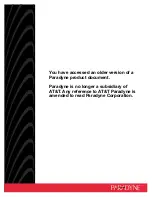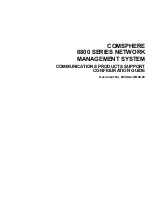
I N S T A L L A T I O N A N D M A I N T E N A N C E M A N U A L
T s u n a m i
F A M I L Y
F A S T E T H E R N E T W I R E L E S S B R I D G E S
J U N E 1 9 9 9
PAGE 3-24
SECTION 3: INSTALLATION & ADJUSTMENTS
3.12 System Turn-up to Service
1.
Prior to installing the system, it may be desirable to perform a back-to-back test of the
Tsunami
radio pair. Consult Section 4.9 for further details. Back-to-back testing is a simple
way to verify that the
Tsunami
radios are fully operational before they are installed.
Installation adds several variables (such as antenna alignment) which can lead to system
turn-up delays. Also, during back-to-back testing, the DIP switch settings and some
connections can be tested. This step can eliminate a majority of troubleshooting once the
radios are installed.
A cellular phone or two-way radio system (walkie talkie, CB,
mobile radio) can be very useful during installation. These
can be used for temporary near-end and far-end
communications between the installation personnel at one
site and installation personnel at the other site while
installing the system. These can also be helpful for
communication between a person at the top of a very tall
tower and ground personnel.
The Tsunami radio incorporates an internal Orderwire feature
that provides end-to-end “telephone” style communications.
However, the link must be partially operational to use this
feature. In lieu of, or in addition to the use of cellular phones
or two-way radio, this Orderwire feature can also be very
useful for installation, but typically cannot be put into service
until step 8 or 9 of this procedure is completed. See Section
3.14.1 for more details.
2.
Perform a general alignment of the antennas on both ends of the path using binoculars,
compass or other related tools. It is important to have the antennas aligned as accurately
as possible before putting radio traffic over the link. This will help in getting the system
running more rapidly. See Section 3.10 for more details.
3.
Connect the transmission line to the antenna, and feed it to the
Tsunami
radio location
(see Section 3.9). Connect the opposite end of the transmission line to the N-type female
connector located on the filter assembly which occupies the top half of the
Tsunami
rear
panel. The connection must be terminated into an antenna or a load before DC power is
applied to the radio.
4.
Verify that the same channel plan (e.g. A, B) as the near-end radio, and the opposite Tx
and Rx frequencies (e.g. A1 and A2 make up a matched pair of radios).
5.
With the DC power source active, but not plugged into the
Tsunami
radio, using a
voltmeter, confirm that the DC mating connector has the proper power connections in
accordance with Section 3.7. Verify the polarity and the absolute voltage on all pins. Verify
ground connection for power.
6.
Connect power to the
Tsunami
radio. Verify that the Front Panel “ON” LED indication is
illuminated. This confirms that power has been properly applied.
Summary of Contents for Tsunami series
Page 1: ...INSTALLATION AND MAINTENANCE MANUAL WIRELESS FAST ETHERNETBRIDGES 5 3 AND 5 8 GHz UNII LE LAN...
Page 2: ......
Page 14: ......
Page 34: ......
















































